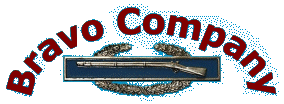

2nd Battalion, 8th Cavalry Regiment 1967-68

 |
|
 |
1st Cavalry Division (Airmobile) or the First Team
| Those
assigned to the 1st Cavalry Division (Airmobile) served in a
unique outfit that was regarded as being one of the Army’s elite units in
Vietnam. The 1st Cavalry Division was unique because it was the
first airmobile division in the US Army and it pioneered the development of
air assault tactics that were used during the Vietnam War. What made this
unit peerless was that it had absolute control over a huge fleet of
helicopters – over 450, and this provided the division with a capability of
rapidly deploying forces for combat operations in distant locations or
reinforcing other units in trouble. It was for these reasons that the 1st
Cavalry Division earned the nickname of the “fire brigade”, and its
subordinate
units moved frequently throughout the northern military regions conducting
combat operations and putting out fires. On our first combat air assault
after deploying to Quang Tri during the Tet Offensive in January 1968, the
fact that Bravo Company received only one map for the whole company
demonstrates how essential logistics were at times unable to keep up with
the rapid pace of our deployments.
The 1st
Cavalry Division consisted of three infantry brigades - 1st, 2nd
and 3rd, plus a large number of support units. Of the three
brigades, one was airborne and that was our unit, the 1st Brigade
(Airborne). The 1st Brigade had three battalions, each with
approximately 900 troopers - the 1st Battalion, 12th
Cavalry Regiment; 1st Battalion, 8th Cavalry Regiment;
and our unit, 2nd Battalion, 8th Cavalry Regiment. The
2nd Battalion 8th Cavalry Regiment was commanded by a
lieutenant colonel and had a Headquarters Company and four infantry
companies - A, B, C, D (or Alpha, Bravo, Charlie, Delta), commanded by
captains.
The vast majority of Bravo Company troopers had been drafted into the army. According to our company roster from April 1968, Bravo Company had 1 captain, 4 lieutenants, 4 E-7 platoon sergeants, 7 E-6 squad leaders, and 137 troopers with the rank of E-5 or below. Out of this last figure of 137 troopers, 78% were draftees and the remainder enlistees. Another special feature of infantry company-sized units in Vietnam was that they were responsible for selecting and promoting their own junior Non-Commissioned Officers (NCOs) from assigned personnel. The normal practice was that only a handful of professional NCOs were assigned to an infantry company, typically the 1st Sergeant, platoon sergeants and we only had seven with the rank of squad leaders (E-6). Of the 33 E-5 sergeants who served as squad leaders and team leaders, all were promoted from the ranks during their service in Bravo Company and this was based on demonstrated leadership ability, and totally ignoring the peacetime criterion of time-in-grade. This dictated a rapid promotion system and these NCOs were usually promoted during the last 6 months of their tour in Vietnam. This reliance on promoting NCOs from assigned personnel was certainly not without problems, particularly when a unit suffered many casualties at the junior NCO level, because there were no replacements available from sources outside of the company. Nevertheless, this rapid promotion system worked well for Bravo Company and these NCOs performed outstandingly in the most challenging position in the US Army, leading troops in combat.
The 1st
Cavalry Division was a very special type of unit and the commanding general
during our period, Major General John Tolson, described the combat troopers
of his division as having a “can do” attitude and they “enjoyed
exceptionally high morale”. Later in the text we will identify some of those
things that contributed to this esprit de corps, but as we moved from An Khe
to Landing Zone English, we recognized that we were in Cavalry Country.
This was made clear to us by the presence of numerous 1st
Cavalry Division patch emblems painted on prominent large rocks in many
different locations, and it was our understanding that these represented
trespassing warning signs and the target audience was our enemy – the North
Vietnamese Army (NVA) and local Vietcong (VC) guerrilla units. |
|||||||||||||||||||
CAV COUNTRY - HONG KONG
MOUNTAIN, AN KHE |
|||||||||||||||||||
| Thanks to 1st Cav Div Assn | |||||||||||||||||||
Dropdown menu by http://www.milonic.com
http://www.milonic.com/removelink.php